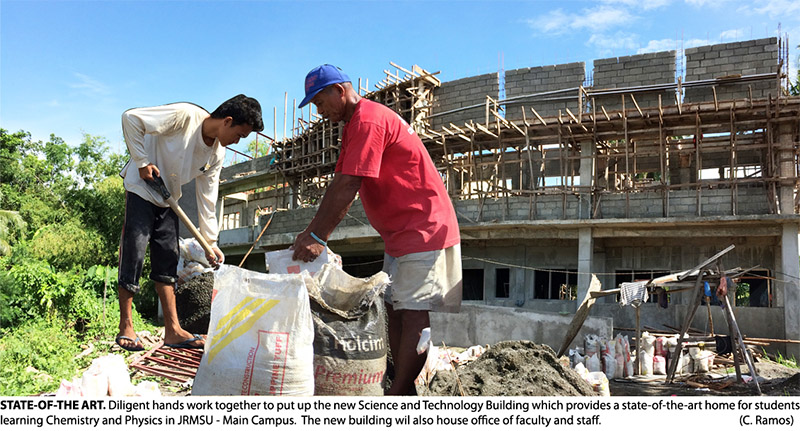Php 12.5 M SciTech Building rises in JRMSU

DAPITAN CITY – Construction is underway on the Php 12.5 M two-storey Science and Technology (SciTech) Building at Jose Rizal Memorial State University – Dapitan City, with the facility expected to be ready for use by December 2016.
Located in the northwestern part of the main campus in Gov. Guading Adaza St., Sta. Cruz, Dapitan City, the 340 sq. ft. facility will provide needed four classrooms, Physics and Chemistry laboratories, and faculty office spaces.
“The Science and Technology Building is designed to be functional and practical, yet attractive and conducive to learning,” said Prof. Farida J. Saavedra, Laboratory In-Charge of JRMSU-Dapitan Campus. “The corridors and study areas in the three-level building will be open and airy, with large windows throughout to allow for natural lighting.”
Php 8 M of the Php 12.5 M will be for the use of buildings, furniture, and fixtures while the remaining Php 4.5 M will be for the purchase of equipment including generator and gas pipes for Physics, Biology and Chemistry rooms.
The University Board of Regents (BOR) agreed that the 2-storey SciTech building with four (4) rooms will be constructed in the amount of Php 8 M pesos including the furniture and fixtures to be designed according to the needs of the University and the standards set by CHED and AACCUP.
“This building will meet a number of academic needs at the university, and it will be exciting to see how students are blessed by the opportunities and resources it will provide,” Prof. Saavedra added.
The project was carried out phase by phase. Phase I is the construction of first floor only plus equipment; while Phase II includes the second floor with equipment. It was also decided that after the SciTech building will be realized, the laboratory rooms used at present will be converted to classrooms; hence, there is no more need to provide classrooms in the second floor.
Prof. Saavedra said that the SciTech Building is constructed to provide the graduate students access to university-owned facility and equipment for sample and data analysis while expanding the operational uses of instructional laboratories into research and developmental laboratories.
By Milea Gionette Jalosjos











